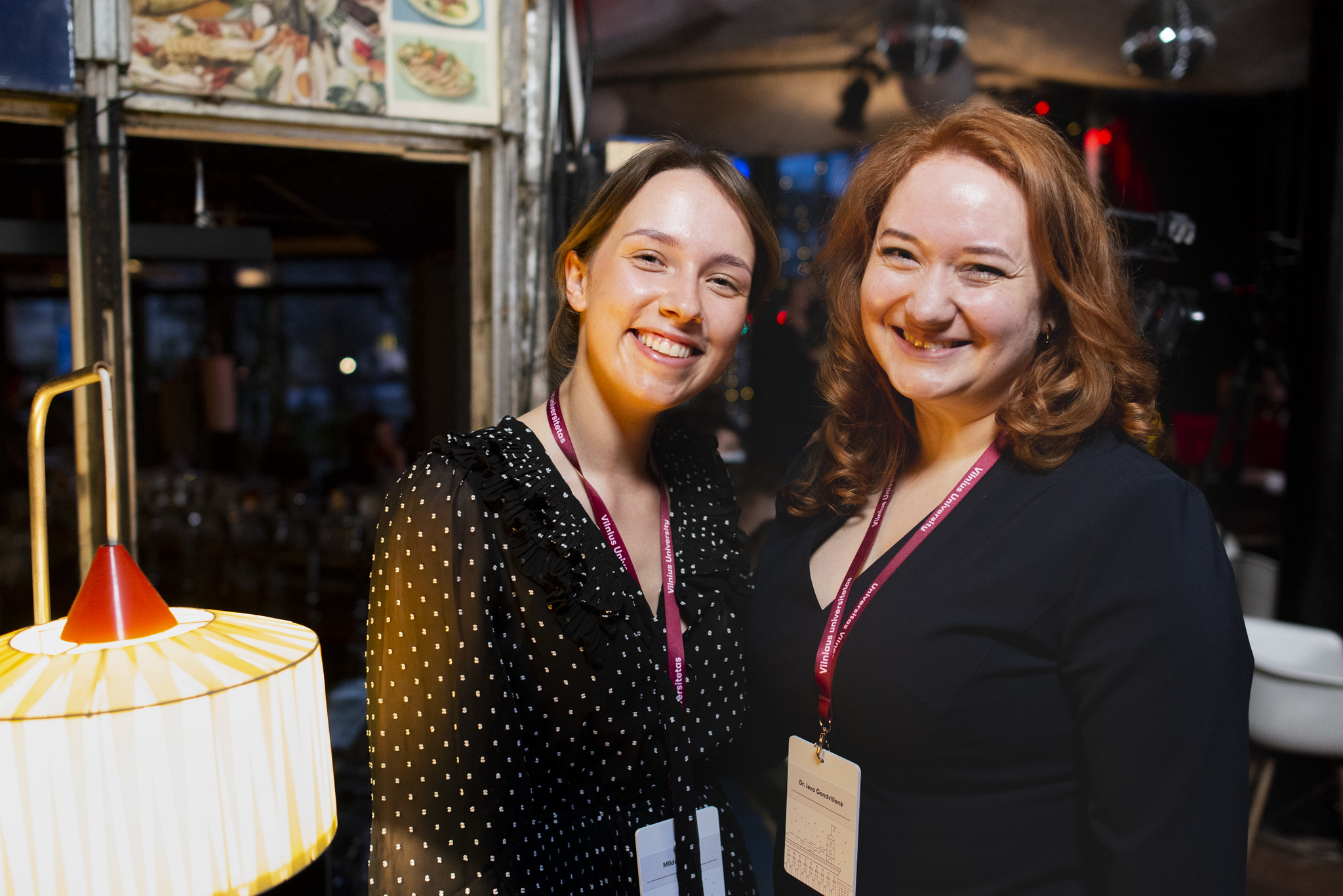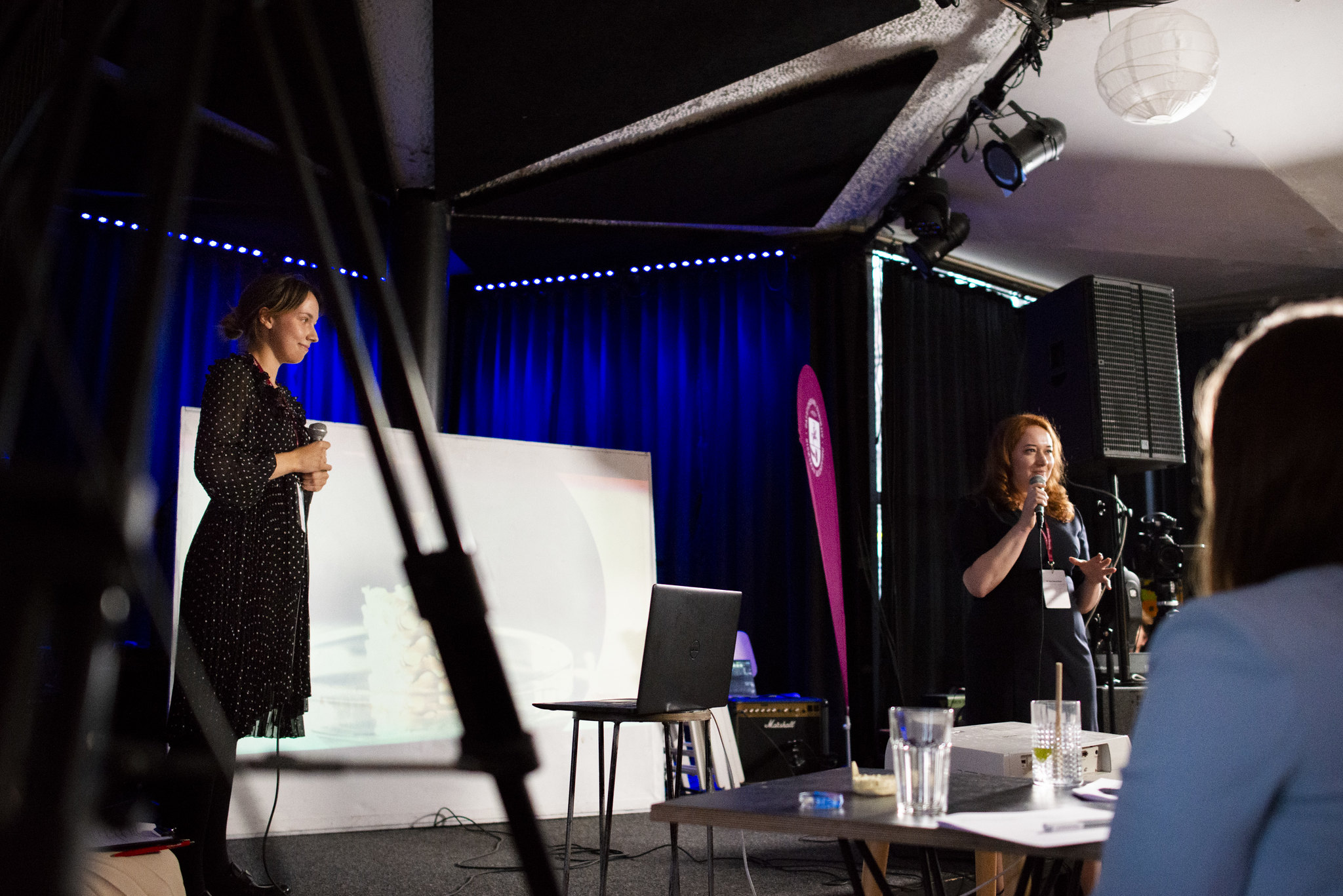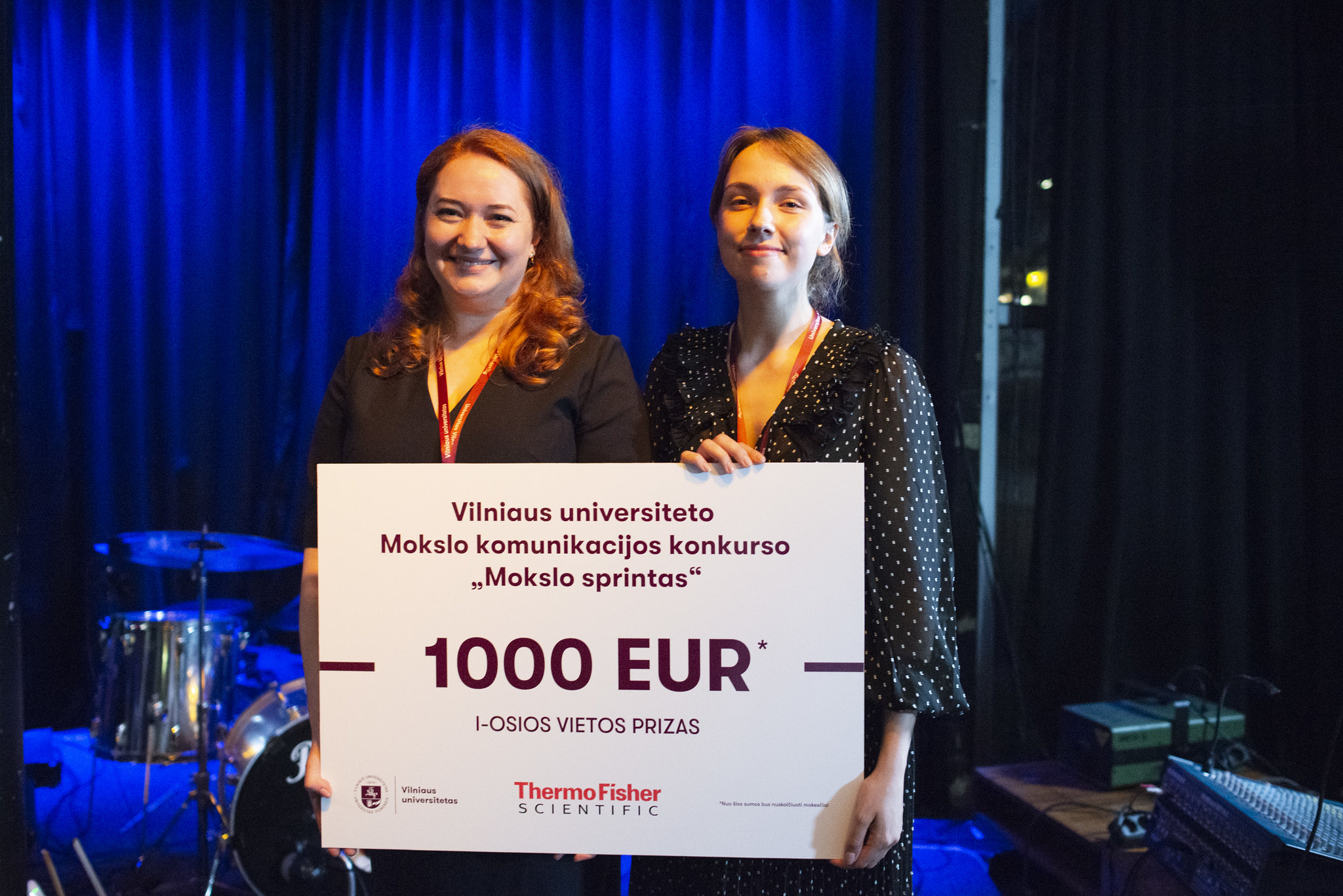 Medical resident Milda Vitosytė and lecturer Dr. Ieva Gendvilienė. Photo: VU MF
Medical resident Milda Vitosytė and lecturer Dr. Ieva Gendvilienė. Photo: VU MF
The Science Sprint competition held on the occasion of the 443rd birthday of Vilnius University was attended by 12 teams, each consisting of a lecturer (or researcher) and a student. Participants had only 3 minutes to present their own research, the research of another researcher, or a science idea that fascinated them. The committee, composed of representatives from science and media, awarded first place to the presentation entitled, 3D printed bone – the future of medicine? delivered by Dr. Ieva Gendvilienė, lecturer at the Institute of Dentistry at the Faculty of Medicine, and resident, Milda Vitosytė. “I’m pleased that my work was recognised. After all, it is not always that you manage to deliver it so it would be clear, simple and interesting. This is a great boost for us!” Milda said.
Was this your partnership debut, or had you worked together before this competition?
I met Dr Gendvilienė when I was in the third year of the dentistry study programme and Ieva was my lecturer. It’s been five years since I got involved in the 3D bone project. Being awarded first place at Science Sprint is not our first achievement, but it certainly was a debut in the sense of our making the presentation together. The presentation of this project had previously come second in an international competition held in Copenhagen in 2019.
How did the idea of getting involved in this topic come about? Why was it interesting to you?
The idea came to my supervisors Prof. Vygandas Rutkūnas, and Dr. Ieva Gendvilienė. It was the topic of Dr Gendvilienė’s doctoral thesis. I am getting more involved in it myself. I found this work extremely interesting, as it is a serious and extensive clinical trial. Students are often unable to get involved due to a lack of knowledge in a particular field of science, a lack of resources or a fear of significant responsibility. I am delighted that I could get involved with it in year three of my studies. Initially, I assisted in research surgeries, but now I perform surgeries myself, so I feel a great responsibility and appreciate the full weight and significance of this work.
 Medical resident Milda Vitosytė and lecturer Dr. Ieva Gendvilienė. Photo: VU MF
Medical resident Milda Vitosytė and lecturer Dr. Ieva Gendvilienė. Photo: VU MF
Tell us what your presentation is about?
We are looking for a three-dimensional bone tissue replacement. The main problem is that many people in the world lose bone tissue for a variety of reasons including injuries or illnesses. This is especially relevant in dentistry, where there is usually not sufficient bone tissue in the case of tooth loss and the necessary restoration of occlusions. Various bone substitutes are used for restoration. The materials currently available on the market are not ideal, and most of them have a variety of disadvantages. For example, the use of human bone tissue from a donor causes problems such as pain, bleeding, a risk of infection, and possible fractures in the donor. Also, most bone tissue alternatives serve as a matrix for bone formation, but do not promote bone tissue regeneration itself.
Our main goal is to create a three-dimensional frame that would be mechanically stable, restore lost bone volume, and at the same time promote bone tissue re-growth within the frame. This means that over time, bone cells should be able to grow into the frame and restore the defect in the bone tissue, while the frame would eventually dissolve. In order to achieve this goal, we work together with colleagues from the Life Sciences Centre of the Institute of Biochemistry at Vilnius University, 3D printing the frame and using it in research with laboratory animals.
In the future, we would like to use this material in humans. This is not easy, however, and requires a great deal of research. We currently focus on how the frame we create affects the body and how the various materials used for 3D printing affect bone formation.
What changes would the goals of your 3D bone project bring to medicine?
Attempts are already being made to apply this method to restoring other major bone fractures using a variety of materials. The ability to restore lost bone tissue in dentistry, and maxillofacial surgery, would allow the patient to experience less discomfort and restore their chewing function and smile. I don’t know if I can say that it would mean a revolution in dentistry and medicine, but I think it would make a significant contribution to the future of medicine and could be a great alternative in the treatment of injuries and illnesses.
You mentioned that you intend to continue this research in the future. Do you have any specific plans?
We are currently continuing our research, with plans to perform research involving human patients. Until studies with laboratory animals are complete, planning is very difficult. Every time we review the research findings, we adjust the composition of the ink for 3D printing or the shape and geometry of the framework, and try to find the best possible combination of material properties suitable for humans. We will continue on this path.
 Lecturer Dr. Ieva Gendvilienė and medical resident Milda Vitosytė have been awarded with a 1000 euro prize, founded by "Thermo Fisher Scientific". Photo: VU MF
Lecturer Dr. Ieva Gendvilienė and medical resident Milda Vitosytė have been awarded with a 1000 euro prize, founded by "Thermo Fisher Scientific". Photo: VU MF
